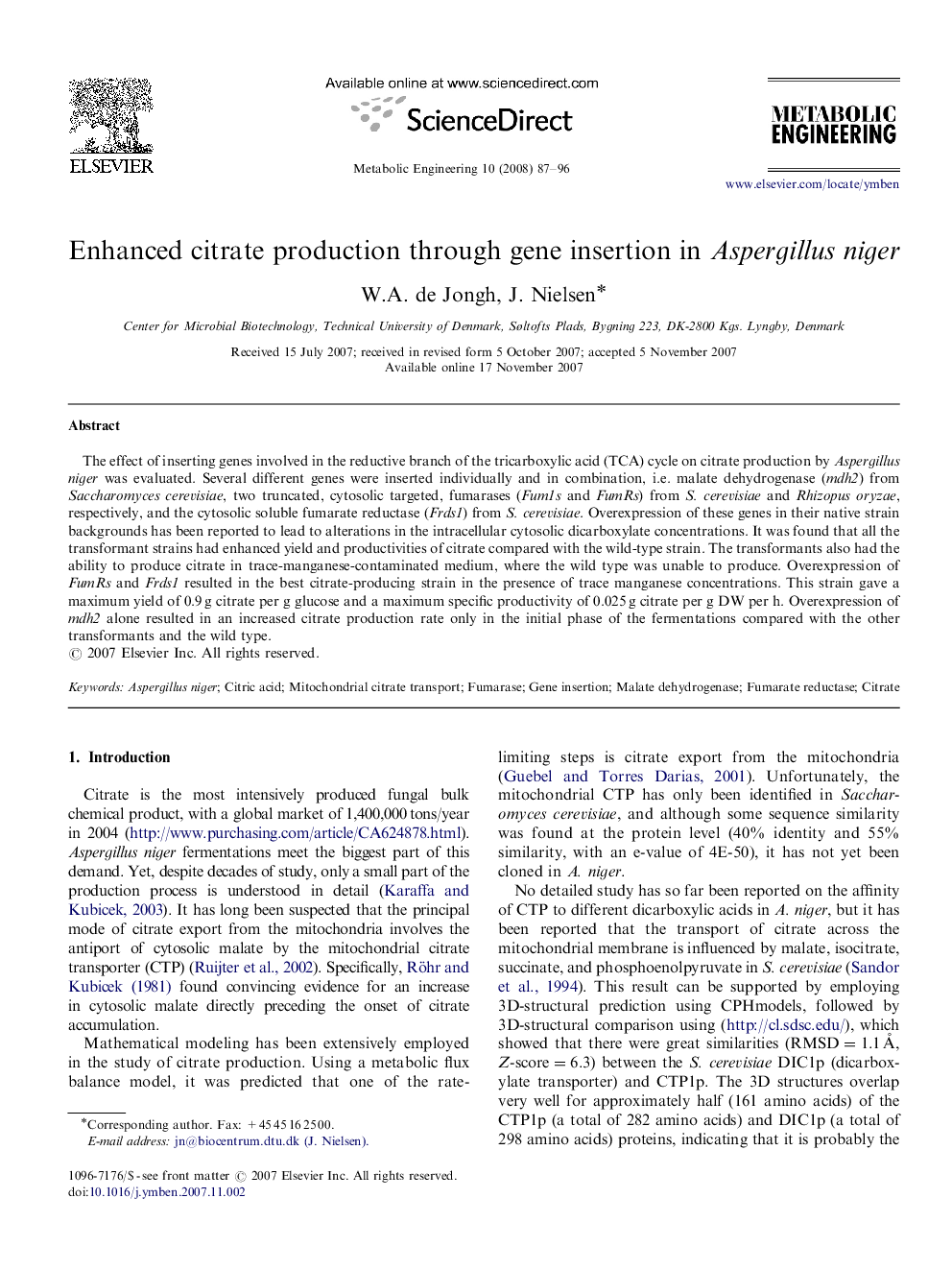| Article ID | Journal | Published Year | Pages | File Type |
|---|---|---|---|---|
| 31906 | Metabolic Engineering | 2008 | 10 Pages |
The effect of inserting genes involved in the reductive branch of the tricarboxylic acid (TCA) cycle on citrate production by Aspergillus niger was evaluated. Several different genes were inserted individually and in combination, i.e. malate dehydrogenase (mdh2) from Saccharomyces cerevisiae, two truncated, cytosolic targeted, fumarases (Fum1s and FumRs) from S. cerevisiae and Rhizopus oryzae, respectively, and the cytosolic soluble fumarate reductase (Frds1) from S. cerevisiae. Overexpression of these genes in their native strain backgrounds has been reported to lead to alterations in the intracellular cytosolic dicarboxylate concentrations. It was found that all the transformant strains had enhanced yield and productivities of citrate compared with the wild-type strain. The transformants also had the ability to produce citrate in trace-manganese-contaminated medium, where the wild type was unable to produce. Overexpression of FumRs and Frds1 resulted in the best citrate-producing strain in the presence of trace manganese concentrations. This strain gave a maximum yield of 0.9 g citrate per g glucose and a maximum specific productivity of 0.025 g citrate per g DW per h. Overexpression of mdh2 alone resulted in an increased citrate production rate only in the initial phase of the fermentations compared with the other transformants and the wild type.
